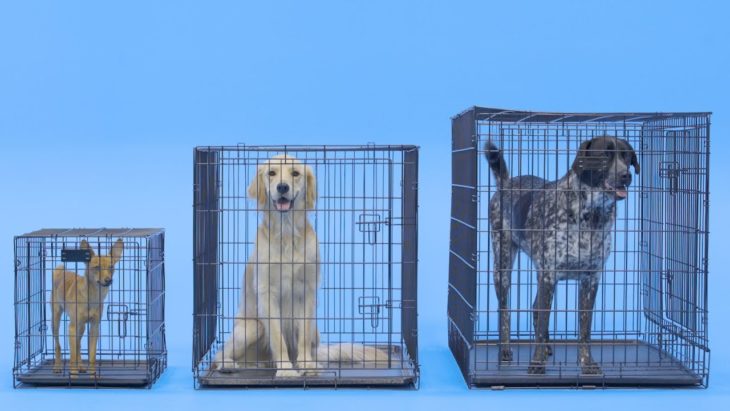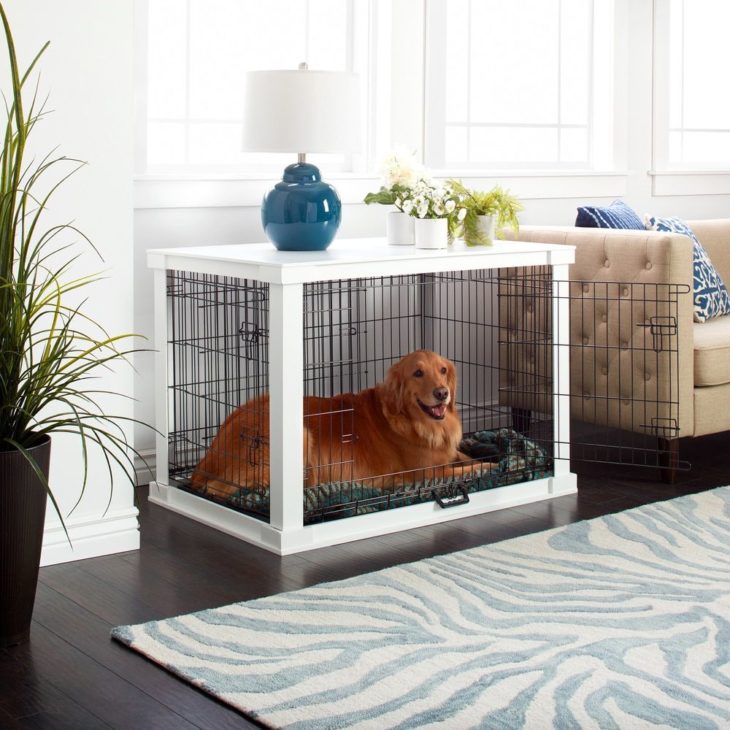Crates are one of the great ways to housetrain your dog; however, you have to make sure that the crate is the right fit for your dog. For small dogs, the decision on which crate to purchase can be less stressful; however, with larger dogs, you have to be extra careful. The last thing you need is to buy a pretty expensive crate that is not suitable for your dog.
In today’s article, we’ve got you covered on how to choose the right size crate for your dog – there are some key factors to consider.
Contents
1. Size Of Your Dog

Source: YouTube
Yes, this is probably the first thing to consider when choosing the crate for your furry little (or big) friend. This will account for the actual width and length of the crate. It’s inevitable to get the exact measurements of your dog – from the dog’s nose to tail(length), and ears to feet(height). Ideally, you should measure the height of your dog when they are in a sitting position.
Generally, you should ensure to add extra inches to the tail, as they keep growing. This way, they don’t suffer from getting their tails stuck between the crate. There is no such thing as ‘too tall crate.’ If you have a golden retriever that is still growing, then invest in a container that is much bigger than your dog. Even if your dog is has stopped increasing in size, remember that they need ample space to turn, move, stretch, sit, and stand. Your dog is not your prisoner, so be careful not to treat it as one by buying a crate that is too small.
2. Crates For Short Term House Training
Some people need their dog’s crate for a certain period only. This means that after the crate has served its purpose for house training your dog, you won’t need it again. Some dogs need a few months to properly get house trained, meaning that you will only need to buy a crate that fits him at that stage.
3. A Traveling Crate

Source: PetRelocation
If your dog travels with you often, then make sure that you get a crate that the dog will grow into, and at the same time fits into your car. Whether it means buying newer or bigger crates as they grow, the last thing you need is spending more money to buy a new container that doesn’t fit into your car or too heavy to carry around, especially if your dog is a large one.
Apart from that, if you will be flying with your dog, then take some time to read the guidelines on the airline for the size and weight of the crate allowed. This could include not only the size of the crate but also the material of the crate.
4. Crate That Is Too Soft
Crates come in different sizes and shapes, some have wider sides than others. So while still on the subject of getting the right crate size for your golden retriever, don’t ignore the fact that your dog might be a chewer. As part of the training process, you want to get a crate that your dog cannot chew away – so not soft-sided crates. And if the sides are wide enough, then your dog can chew a few bars and escape out of the crate – this will defeat the entire purpose of house training your dog.
5. Other Purposes For The Crate

Source: Pinterest
Another thing to consider is what you will use the crate for after your dog has been trained. Your dog’s old crate can become an intricate part of your house’s decor. So make sure that the size of the crate will not be obnoxiously sticking out. Also, you can use it as a hiding place(for the dog) when playing games.
Conclusion
Crates will significantly help you house train your dog by reducing the length of the house training period. So, if this is your first time purchasing a crate, we want you to be prepared before making any errors and if you are still insecure, you can click here for more details on dog crates! Your dog should feel safe and comfortable in their crates. Happy dog, happy dog owner!
